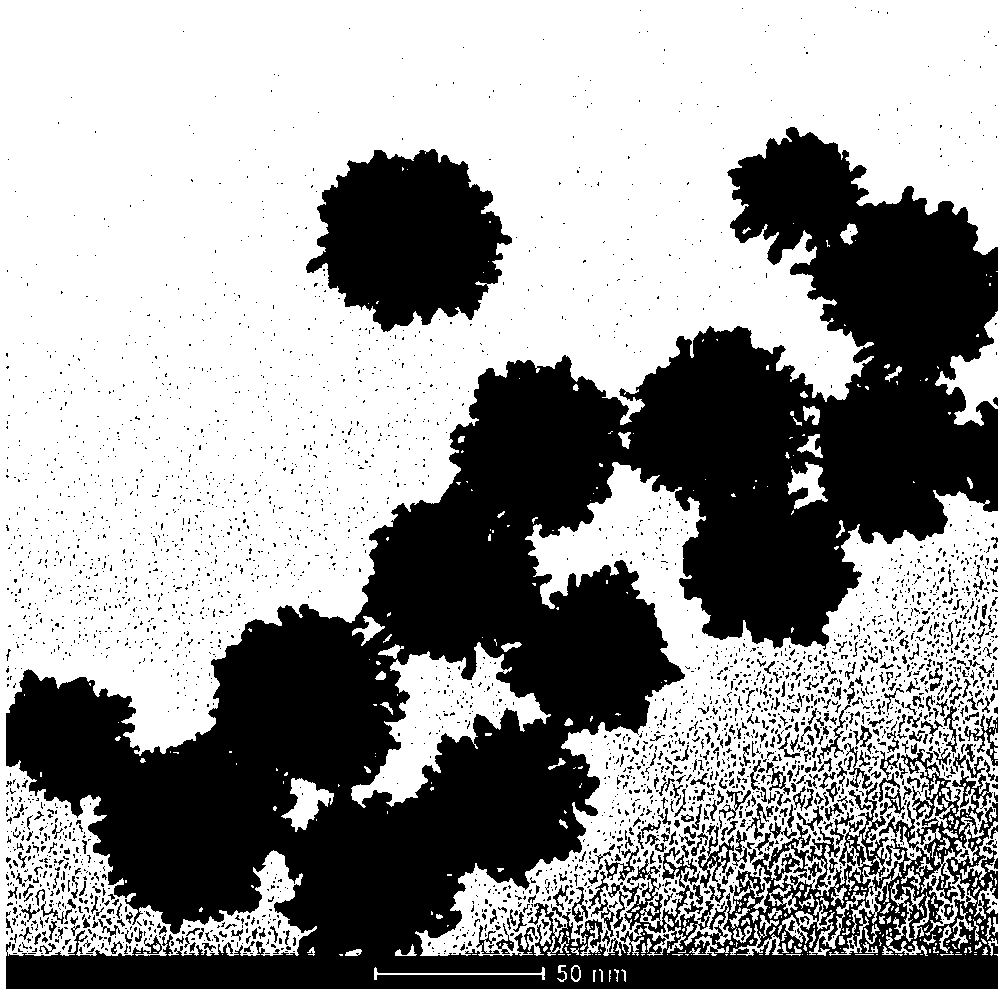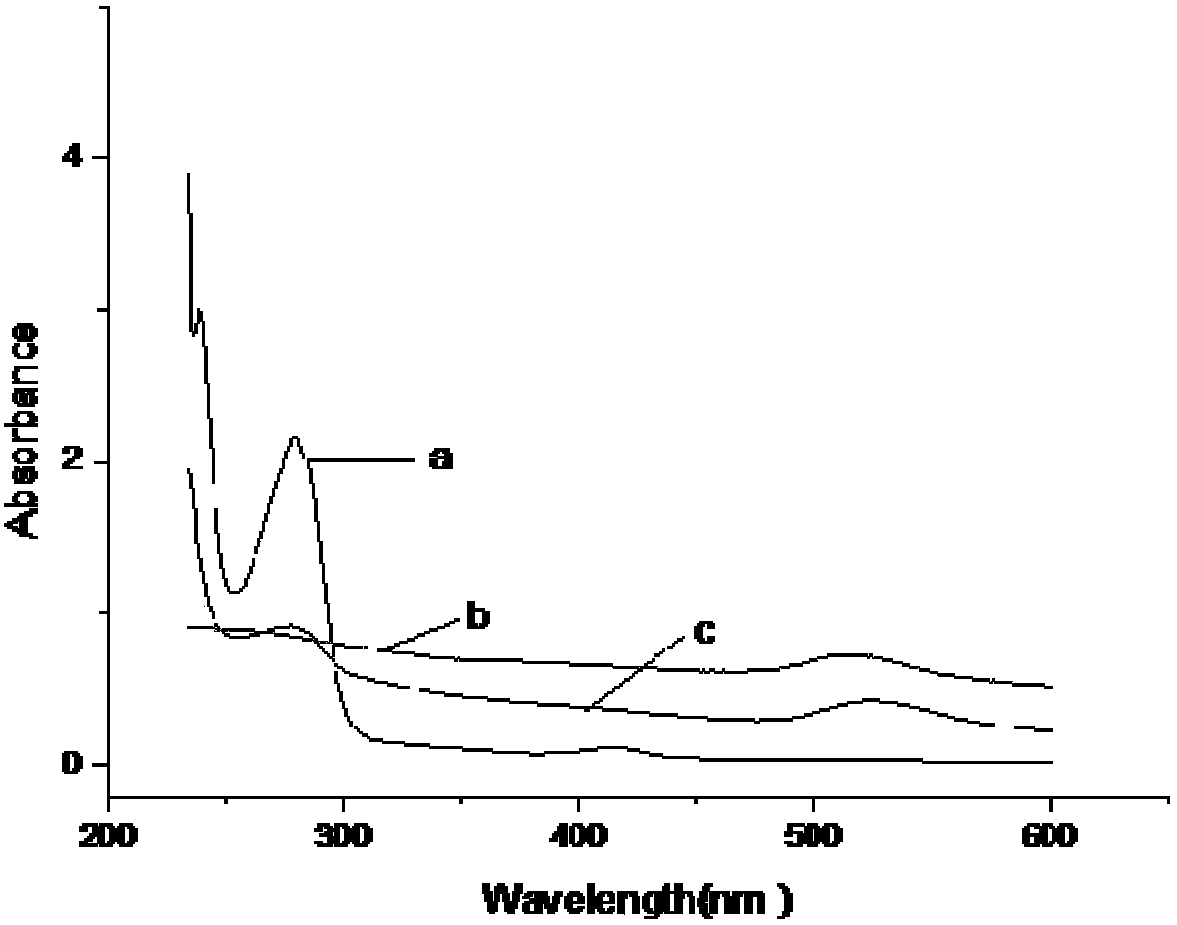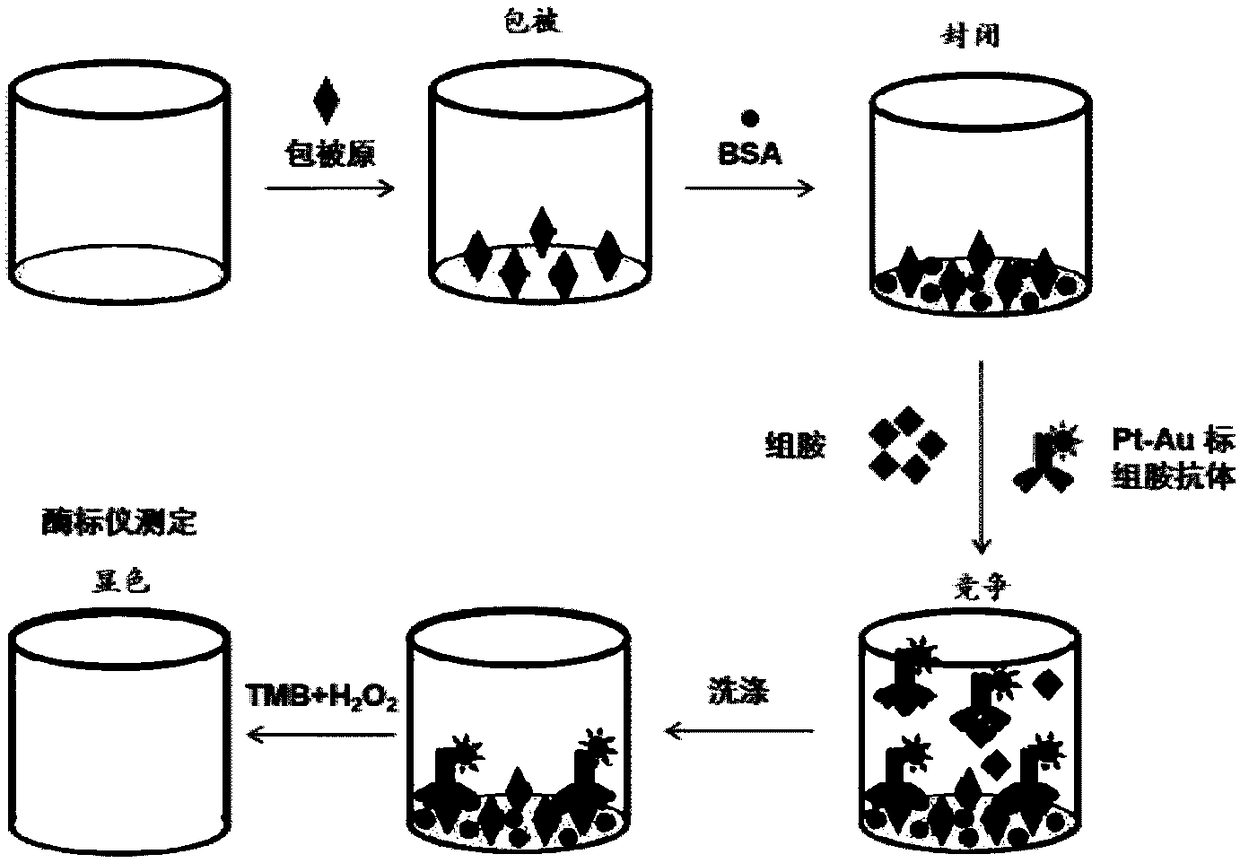Histamine immunoassay method based on characteristics of platinum-gold bimetallic nano-particle peroxidase
A technology of bimetallic nanoparticles and gold nanoparticles, which is applied in the direction of analytical materials, measuring devices, instruments, etc., can solve the problem of detecting histamine with Pt-Au bimetallic nanoparticles, and achieve easy large-scale preparation and huge application Prospect, effect of simple preparation method
- Summary
- Abstract
- Description
- Claims
- Application Information
AI Technical Summary
Problems solved by technology
Method used
Image
Examples
Embodiment 1
[0044] 1. Preparation of platinum-gold bimetallic nanoparticles
[0045] 0.9 mL of K 2 PtCl 4 (20 mM), 0.1 mL HAuCl 4 (20 mM) mixed, add 10 mg Pluronic F127, ultrasonic to dissolve, then add 1.0 mL of ascorbic acid (100 mM) as reducing agent, the mixed solution was ultrasonically reacted in a water bath at 30ºC for 5 hours, and the product was separated by centrifugation at 10000r / min for 20min. Wash with ethanol and water repeatedly 5 times to remove residual PluronicF127, and reconstitute with 0.9 mL of water for later use.
[0046] From figure 1 It can be seen that the prepared platinum nanoparticles are porous nanostructures with a particle size of about 50 nm, and the surface is composed of Pt nanoparticles with a uniform distribution of about 5 nm.
[0047] 2. Preparation of platinum-gold labeled antibody nanoprobe complex
[0048] Dilute the platinum-gold nanoparticle solution prepared above to 20 mM, take 1.0 mL and adjust the pH value to 8-9 with 0.1M potassium ...
Embodiment 2
[0058] 1. Preparation of platinum-gold bimetallic nanoparticles
[0059] Same as embodiment 1;
[0060] 2. Preparation of platinum-gold labeled antibody nanoprobe complex
[0061] Basically the same as Example 1, the only difference is that the platinum-gold nanoparticle solution was diluted to 5 mM, and 20 μL of histamine monoclonal antibody (final concentration 5.35 mg / mL) was added.
[0062] 3. Establishment of working curve
[0063] Same as Example 1.
Embodiment 3
[0065] 1. Preparation of platinum-gold bimetallic nanoparticles
[0066] Same as embodiment 1;
[0067] 2. Preparation of platinum-gold labeled antibody nanoprobe complex
[0068] Basically the same as in Example 1, the only difference is that the platinum-gold nanoparticle solution was diluted to 30 mM, and 20 μL of histamine monoclonal antibody (final concentration 5.35 mg / mL) was added.
[0069] 3. Establishment of working curve
[0070] Same as Example 1.
PUM
| Property | Measurement | Unit |
|---|---|---|
| particle diameter | aaaaa | aaaaa |
| particle diameter | aaaaa | aaaaa |
Abstract
Description
Claims
Application Information
 Login to View More
Login to View More - R&D
- Intellectual Property
- Life Sciences
- Materials
- Tech Scout
- Unparalleled Data Quality
- Higher Quality Content
- 60% Fewer Hallucinations
Browse by: Latest US Patents, China's latest patents, Technical Efficacy Thesaurus, Application Domain, Technology Topic, Popular Technical Reports.
© 2025 PatSnap. All rights reserved.Legal|Privacy policy|Modern Slavery Act Transparency Statement|Sitemap|About US| Contact US: help@patsnap.com



